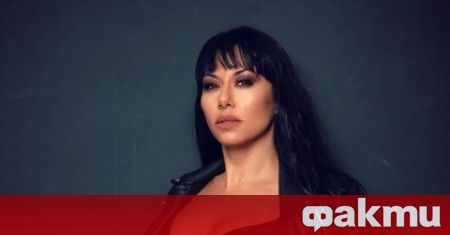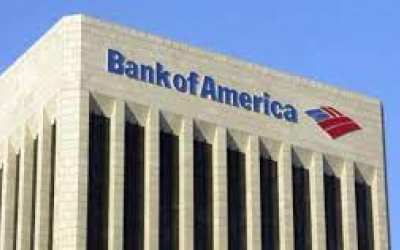Norwegian Top Football (NTF) will propose to open up for new ownership models in Norwegian football.
ULLEVAAL STADION (Nettavisen): Recently, the discussion about several possible changes in Norwegian football has flared up. In early November, NTF stated to NRK that they are investigating the possibility of a completely new league structure for the men.
This will include a playoff to increase the number of matches for Norwegian clubs.
Several other changes may also be relevant in the coming time.
also read
Has sold players for over 100 million. Now Berntsen warns: – People want to give flat f * ck
To Nettavisen, CEO Leif Øverland of NTF says that they also want to look at the possibility of making changes on the ownership side of the clubs.
– We propose this in our strategy plan which will be published in January, says Øverland who is the leader of the interest organization for the top clubs in the Elite Series and the OBOS league.
They have registered that Norway has not taken as large a share of the economic growth in football as elsewhere in Europe in recent years.
Øverland now reveals that the topic of ownership of Norwegian football clubs has been up for discussion among the clubs.
– We in Norwegian top football believe that you have to look at it again, and do not really understand that it should be a problem to bring about a change. If you get owners who know this industry, and are willing to invest in it, then I do not understand that it should be wrong, he says and opens up with it a debate that it should be allowed with new models for ownership of Norwegian football clubs.
– Top football is business
In the series “The battle for the football millions”, the online newspaper focuses on the economic differences in Norwegian football compared to countries around us. In recent years, Denmark in particular has gained an ever-increasing economic lead over Norway.
Overview of transitions: Norway, Denmark and Sweden in the period 2019-2021
Seasons 2021/2022:
Norway:
Antonio Nusa – Stabæk to Club Brugge – Around 35 million kroner
Kristoffer Klaesson – Vålerenga to Leeds – About 20 million kroner
Stian Gregersen – Molde to Bordeaux – About 20 million kroner
Denmark:
Kamaldeen Sulemana – North Zealand to Rennes – Around 180 million kroner
Mohamed Daramy – FC Copenhagen to Ajax – Around 150 million kroner
Frank Onyeka – FC Midtjylland to Brentford – Around 110 million kroner
Sweden:
Sead Haksabanovic – IFK Norrköping to Rubin Kazan – Around 70 million
Isak Bergmann Jóhannesson – IFK Norrköping to FC Copenhagen – Around 50 million
Joseph Okumu – Elfsborg to KAA Gent – About 40 million
2020/2021 seasons:
Norway:
Jens Petter Hauge – Bodø / Glimt to AC Milan – Around 50 million kroner
Kristoffer Askildsen – Stabæk to Sampdoria – Around 25 million kroner
Kasper Junker – Bodø / Glimt to Urawa Reds – About 20 million kroner
Total sales amount in 2020: NOK 277 million
Denmark:
Mohammed Kudus – North Zealand to Ajax – Around 110 million kroner
Mikkel Damsgaard – North Zealand to Sampdoria – Around 80 million kroner
Isaac Atanga – North Zealand to Cincinnati – About 50 million kroner
Total sales amount in 2020: NOK 525 million
Sweden:
Pontus Almqvist – IFK Norrköping to Rostov – Around 45 million kroner
Jesper Karlsson – Elfsborg to AZ Alkmaar – Around 30 million kroner
Armin Gigovic – Helsingborg to Rostov – About 30 million
Total sales amount in 2020: NOK 295 million
2019/2020 seasons:
Norway:
Håkon Evjen – Bodø / Glimt to AZ Alkmaar – Around NOK 25 million
Chidera Ejuke – Vålerenga to Heerenveen – Around 20 million kroner
Kristian Thorstvedt – Viking to KRC Genk – About 15 million kroner
Total sales amount for 2019: NOK 269 million
Denmark:
Dennis Vavro – FC Copenhagen to Lazio – Around 110 million kroner
Robert Skov – FC Copenhagen to Hoffenheim – Around 100 million kroner
Jesse Joronen – FC Copenhagen to Brescia – Around 60 million kroner
Total sales amount for 2019: NOK 710 million
Sweden:
Marcus Danielsson – Djurgården to DL Pro – Around 50 million kroner
Jordan Larsson – Norrköping to Spartak Moscow – About 40 million kroner
Odilon Kossounou – Hammarby to Club Brugge – Around 40 million kroner
Total sales amount for 2019: NOK 356 million
Source: Transfer Market and FIFA’s Global Transfer Market Report 2019 and 2020 (the report for 2021 is per day date not published).
–
–
–
Part of the explanation lies in the large player sales that the Elite Series clubs are not close to matching, but also when it comes to club ownership, there are clear differences.
– There are a handful of joint stock companies in and around Norwegian football (through the dual model editor’s note), which we either work in or trade with, which is quite common. Top football is business, believing something else is completely wrong. We believe a professionalisation of Norwegian football is right, because there are large jobs and large companies, says Øverland.
Unlike in Norway, ownership from foreign players is permitted in Denmark. A free market where football clubs can be listed on the stock exchange. Several of the Danish clubs that have made a large profit from the sale of players have owners who are not registered in Denmark.
FC Midtjylland and FC Nordsjælland are two examples of clubs that have taken great sporting and financial steps after they came into foreign hands. The former is owned by Matthew Benham who also has control of the Premier League club Brentford. North Zealand has until recently been owned by the English / American investment company Pathways Group, before Egyptian owners invested heavily and took over the majority of shares earlier this year.
Øverland and NTF have noticed that the Danes in particular have moved away from Norway, and gained a marked advantage in, among other things, recruiting players.

also read
Goes really hard against Norwegian football: – Foreign clubs sit and laugh
– We are not talking about a gang from the Middle East who will come in and start laundering money here. We must set up a set of rules that means that we still have control over what happens, because we must not be stupid, but try to meet the change with an open mind, Øverland explains before he continues:
– I think the German model is wise, where you let in professional owners and get capital, but where the members control. I do not think we should jump straight to the Danish model here. There is something about the Norwegian soul and how we are built up, he says.
In Germany, so-called professional owners who can inject capital are also allowed, but the members still have the largest share.
The NTF chief believes that Norway has now been so slow in this question that it has been possible to draw on learning and experiences from other countries on what works and what does not. The message is clear anyway.
– We believe a new ownership model must be studied, is the clear message.
– Does not jump to conclusion, but we want it to be investigated
U-national team coach Pål Arne «Paco» Johansen has in recent months led the strategy process for NTF related to sports. Between February and August, he was acting sports director in a 50 percent position. A job Molde director Øystein Neerland (57) will take over on a permanent basis during December.
– This is a central theme. The financial aspect of football is something people are concerned about. There are seven ways to make money or raise capital in football. Ownership structures are one of the seven sources, says Paco to Nettavisen.
Paco is quick to point out that one must be extremely balanced in working with this topic. Among other things, he highlights the debate around Qatar and so-called sports laundering.
– If you are going to do something about this, it must be sustainability-oriented, he says.
Øverland says the clubs experience that there is still a large talent leak in Norwegian football and that we are not good enough to get the maximum value in our players. Values you can again use to develop football in the clubs here at home.
– Then it is the owners who must discuss this further, ie the clubs, in January. We will therefore propose to study a new ownership model than the one we have today. The group that has worked with the problem of player sales in Norwegian football, has seen this alternative as an opportunity to increase prices. We do not jump to any conclusion, but we want it to be investigated, he says.

also read
See the huge million differences between Norway and Denmark: – Quite a bit
– Why do you want this and what is wrong with the model we have today?
– Norwegian top football believes that such a change will help to increase the level and quality of the Norwegian leagues. That you get professional owners who are willing to invest in the top clubs, we do not think that 16 elite league clubs will be owned by investors, but we think it will be good for a few. It is not number one on our priority list, because it is still spending resources on player and coach development.
Finally, Øverland is clear that requirements must be set for any new investors who want to join Norwegian clubs.
– We can say that we do not want ownership from tax havens. Openness of structures where nothing is hidden. We can also start with a step-by-step model. I am interested in pointing out that opening up to investors in Norwegian football does not mean a closed system. In my model, that means more openness.
– There must be ethical standards and we must stand for our values, he concludes.
–


